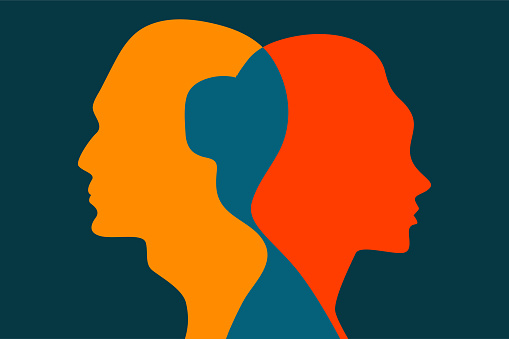In September 2010, Bell Let’s Talk began as an initiative to start a new conversation around mental health in Canada. At that time, the discourse around mental health and mental illness was not as prominent as in recent years due to the stigma surrounding it that prevented individuals from seeking care and speaking openly about their struggles. Since 2010, many Canadians, including leading health organizations, have engaged in an open discussion about mental health for “Bell Let’s Talk,” paving the way for new discourse around mental wellbeing, with the number of individuals and organizations participating growing each year. Building on years of increasing awareness and acceptance around mental health, “Bell Let’s Talk” is focused on engaging Canadians to take action to create positive change in mental health.
The last two years have been some of the most challenging in recent memory. COVID-19 swept through the globe, becoming a catalyst for significant changes to everyday life. Even after two years of battling the virus, it continues to impact countless lives and organizations and restructure the way we operate. Many individuals have seen their place of work impacted in some way and experienced impact on a personal level. Mental health and wellbeing have been pushed to the forefront and individuals have had to rethink what wellbeing looks like and prioritize mental health. And with “Bell Let’s Talk” day approaching, recognition of and discussion around mental health and promoting access to wellbeing services remains top of mind for many organizations.
What is mental health?
A holistic definition of mental health encompasses many facets of an individual’s overall being, including the physical, emotional and psychological. When defining health, the World Health Organization (WHO) states that “Health is a state of complete physical, mental and social wellbeing and not merely the absence of disease or infirmity.” The WHO also states that “Mental health is a state of wellbeing in which an individual realizes his or her own abilities, can cope with the normal stresses of life, can work productively and is able to make a contribution to his or her community.”
However, an individual’s capacity to be in control in their personal and professional lives can be adversely affected by poor mental health, and certain factors can affect a person’s wellbeing. The Government of Canada lists 12 main determinants of health as factors that influence an individual’s health. Factors such as employment and working conditions, physical environments and access to health services are included in the list. Certain factors are pre-existing or can undergo disruptions that in turn adversely affect a person’s health. Physical changes such as a change in the workspace or environment can contribute to mental health disruptions. Psychological changes such as stress and anxiety can also affect individuals’ health and disrupt their personal and professional lives.
By the numbers
A recent ISOS poll brought to light the severe impact the pandemic has had on Canadians. The poll indicated that 49 percent of Canadians have experienced severe levels of stress and depression, placing them at high mental health risk. The study also highlights the disparities between groups that are considered at high risk. According to the study, 73 percent of Millennials and Gen Z are considered high risk in comparison with Gen X and Boomers with 49 and 26 percent, respectively.
Statistics also indicate that one in five people in Canada will experience a mental health problem or illness, with depression affecting 5.4 percent of Canadians and anxiety disorders affecting 4.6 percent. The WHO states that depression is one of the leading causes of disability. People with severe mental health conditions die prematurely – as much as two decades early – due to preventable physical conditions. And the cost of mental health runs deep: two of the most common mental health conditions, depression and anxiety, cost the global economy $1 trillion US each year.
Promoting mental health and wellbeing
The COVID-19 pandemic has been tragic, to say the least, and its ripple may continue to affect us for years to come. Engaging, acting and sharing stories of personal struggles can help individuals feel more connected to others. And while initiatives like “Bell Let’s Talk” provide a platform through which to talk openly about mental health, making the discourse around the topic an ongoing effort will help normalize it. The following are some initiatives that organizations and individuals can do to proactively promote wellbeing in the workplace.
For organizations:
- Hold an open forum discussion where employees can come together and talk about mental health in a non-discriminatory, stigma-free environment.
- Encourage managers and C-suite executives to share their own stories about mental health and wellbeing to inspire and create a culture of openness. There may be others in the world who are experiencing the same problems and may offer insight into overcoming issues and worries.
- Establish a wellbeing program to ensure employees have access to mental health services. If your organization does have a wellbeing program in place, send out frequent reminders to employees of the support services available and share wellbeing resources.
- Provide training for managers to recognize poor mental health and signs of burnout and stress so they can act accordingly and learn how to prevent them in the workplace.
- Establish programs that incentivize employees to take breaks, practice mindfulness throughout the day and incorporate physical activity in their routines.
For individuals:
- Hearing about the pandemic repeatedly can be upsetting and be a significant source of distress. Take breaks from staying connected to 24-hour news cycles, including social media. Focus instead on keeping up with new COVID-19 protocols only as required.
- Find time to connect with those you feel comfortable with, either in-person or virtually, to share challenges and triumphs. Let those close to you share their concerns. Struggling with mental health can be a challenge, and sometimes, all one needs is someone who is available to listen. We may be isolated physically in today’s world but we are more closely connected than ever before.
- Despite the uncertainties that we can continue to experience due to COVID-19, maintaining as normal a routine as possible, including engaging in activities and hobbies as permitted, can help ease anxiety and distress.
- Focus your energies on what you can control rather than worrying about what you cannot control. You can try a new hobby, talk to a friend who lives in another country with the aid of technology and find creative ways to exercise but you cannot control what the future will look like or when we will go back to business as usual.
- Reach out to your wellbeing program for support. Employee wellbeing programs have an abundance of resources and professionals like psychologists, counsellors, coaches, and consultants ready to provide you with support so you can gain a sense of control in times of stress and thrive, personally and professionally.
Sources
IPSOS. (2021, October 14). Half of Canadians at “High Risk” On Their Mental Health. Retrieved January 18, 2022 from https://www.ipsos.com/en-ca/news-polls/canadians-high-risk-mental-health
Government of Canada. (2020, October 7). Social determinants of health and health inequalities. Retrieved January 18, 2022 from https://www.canada.ca/en/public-health/services/health-promotion/population-health/what-determines-health.html
Canadian Mental Health Association. (2020, January 13). Mental health: What is it, really? Retrieved January 18, 2022 from https://cmha.ca/mental-health-what-is-it-really/
World Health Organization. (2018, March 30). Mental health: strengthening our response. Retrieved January 18, 2022 from https://www.who.int/news-room/fact-sheets/detail/mental-health-strengthening-our-response
World Health Organization. (2021, September 13). Depression. Retrieved January 18, 2022 from https://www.who.int/news-room/fact-sheets/detail/depression
World Health Organization. Premature death among people with severe mental disorders. Retrieved January 18, 2022 from https://www.who.int/mental_health/management/info_sheet.pdf
World Health Organization. Mental health. Retrieved January 18, 2022 from https://www.who.int/health-topics/mental-health#tab=tab_1


































